FIBER REINFORCEMENT IN 3D PRINTING WITH CLAY
01_Context
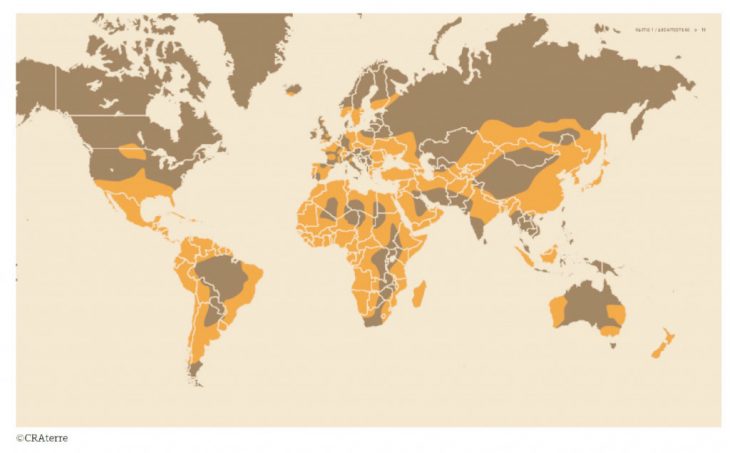
About 30 percent of the world’s population (1.5 billion people) live in earth house. Most earth houses are located in earthquake area so traditional earthquake resistant method were developed. However, 3d earth printing technology has not enough reinforcement way for earthquake resistance, and also for taller buildings, more complex geometry and bigger cantilever angles. This research is for finding reinforcement way of 3d earth printing house.
02_References
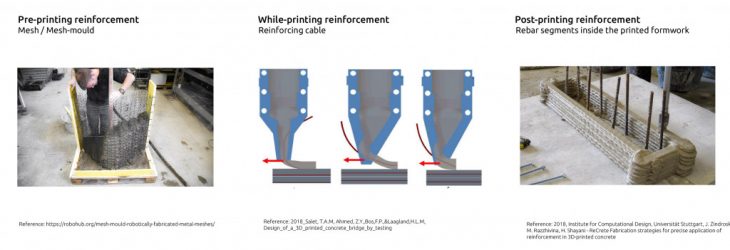
In concrete printing, there are some reinforcement method. They can be good reference for this research. First one is printing in steal mesh frame. Second one is putting metal wire in printing layer during printing. Last one is a placing rebars in the 3d printing wall. However, these methods are not perfect way for 3d earth printing.
03_Reinforcement Scale
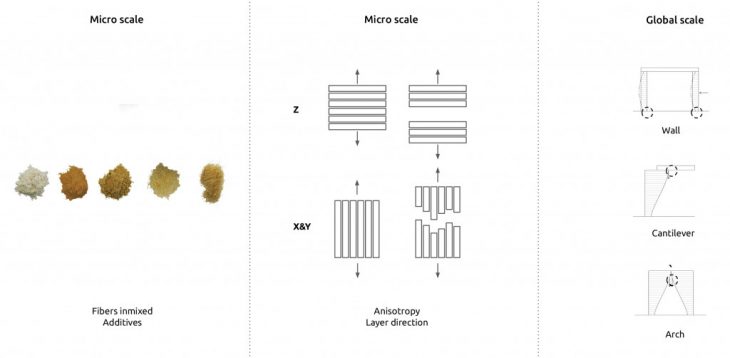
The reinforcement of 3d earth printing can be categorized in 3 scales. Micro scale is short fiber (less than 1cm) mixed with clay. Macro scale is reinforcement between layers. In this scale, anisotropy should be considered because 3d printing has different strength depends on direction. Global scale is how to reinforce with geometries such as wall, cantilever and arch. So this research follows these 3 scales.
04_ Experiment-1 (Micro and Macro Scale)
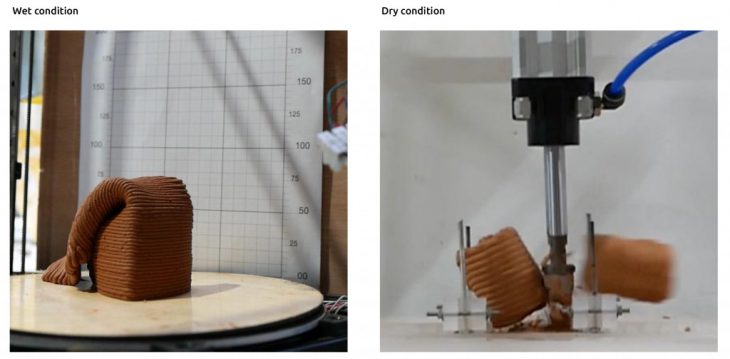
In Micro and Macro scale, 3d printed samples were tested in Wet condition and Dry condition. Wet condition is for stability in construction. Dry condition is testing improvement strength of 3d earth printing.
Experiment-1 |Dry condition ]
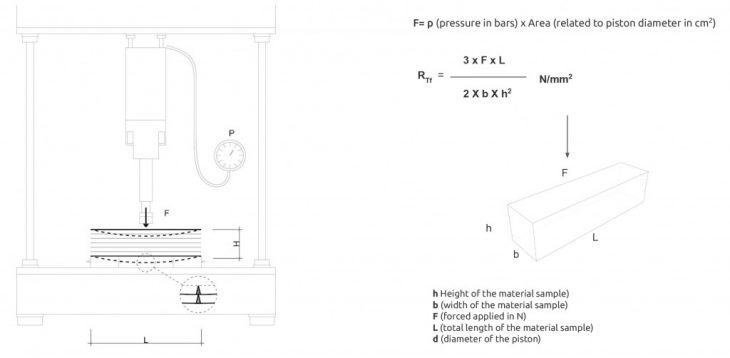
For testing dried samples, three-points flextural test was used by crash machine. By this test, we can calculate tensile force of samples.
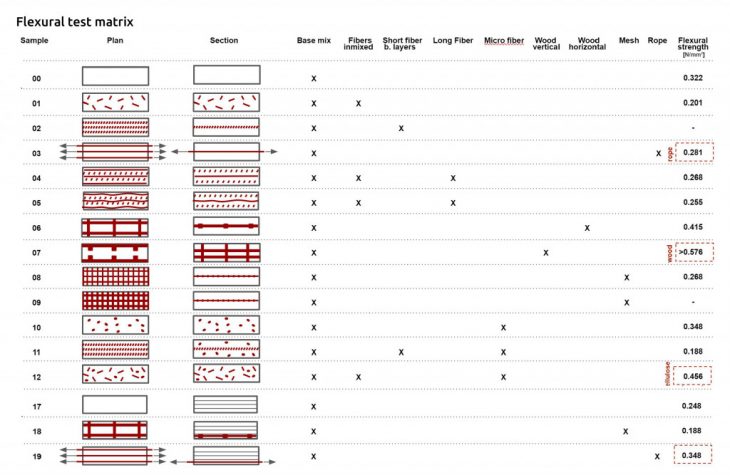
By this testing, placing wood frame in 3d printing layers has the best result. But pre-tensioned rope has more potential for design freedom.So we decided to use micro fiber + fibers inmixed (second result) and pre-tensioned rope (third result).
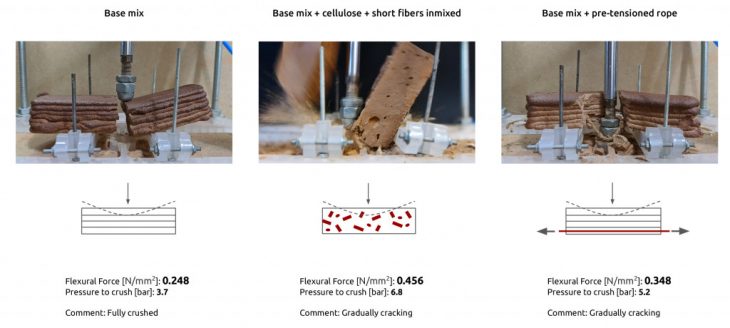
Experiment-2 | Wet condition ]
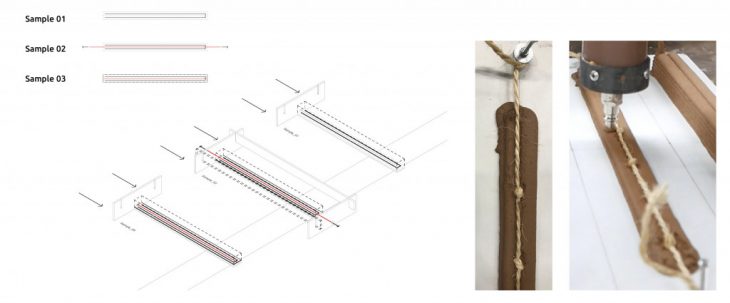
For wet condition test, we printed 3 samples. Sample 01 is printed sample without reinforcement. Sample 02 has placing pre-tensioned rope between layers. Sample 03 has rope between layers without tension. These three samples are pushed by same force and movement distance was checked to find which sample is stronger to tensile force in wet condition.
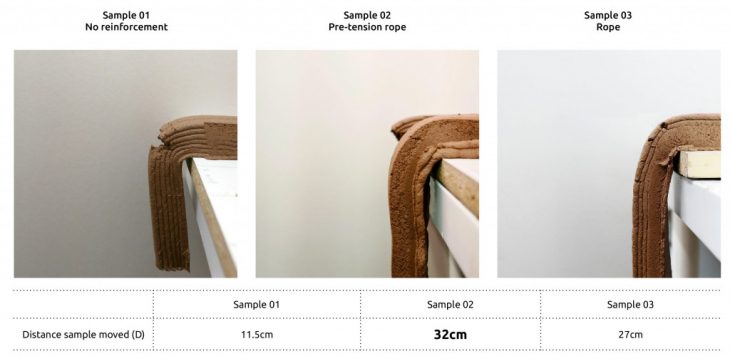
Sample 02 has the best result (32 cm).
Conclusion]
Placing pre-tensioned rope between layers are the best way to reinforce 3d clay printing in wet condition and dry condition.
05_Experiment-2 (global scale)
1:10 printing Test]
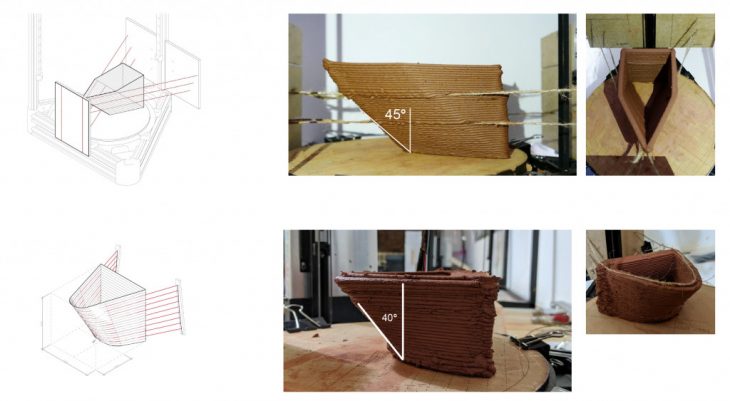
For placing pre-tensioned rope during 3d printing, 2 type of geometries were tested in Delta 3d printer in 1:10 Scale. First one is Ruled surface with straight profiles. Second one is geometry with curve profile. Second one has bending during printing in 40 degree overhang. However, ruled-surface shows stable printing quality. This is because Straight rope can keep tension and this tension is helpful to reduce bending and buckling.
1:5 printing Test]
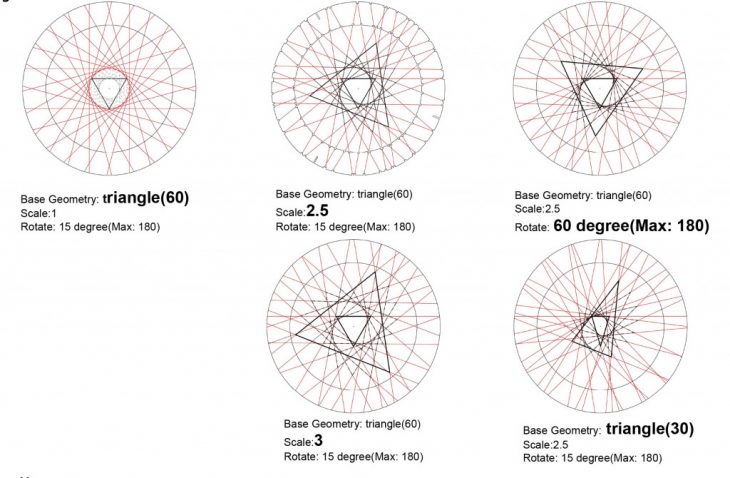
Frame for placing rope should be circle because it can contain 360 degrees direction rope. In 1:5 scale printing test, rope grid was designed first and geometries were produced by modifying grid.
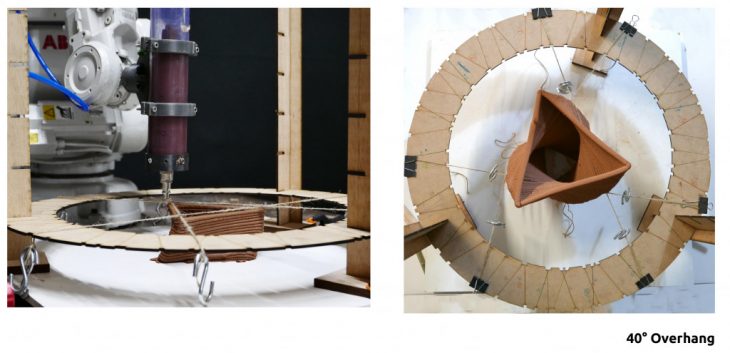
The geometry with 40 degree overhang can be printed in 1:5 scale with ABB. In this test, we found 2 interesting points.
- Keeping tension is important for making geometry stable during printing.
- Rope is helpful to reduce buckling.
1:3 printing Test]
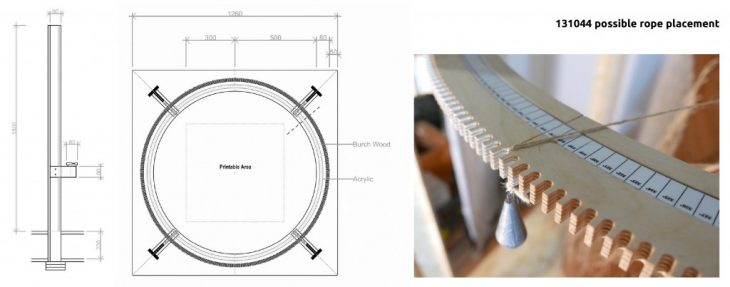
This circle frame is more developed than 1:5 frame. It has 359 teeth for placing rope. So total 131044 ropes can be placed in different direction. This can give more design freedom and produce various geometry with reinforcement.
– Single column printing test
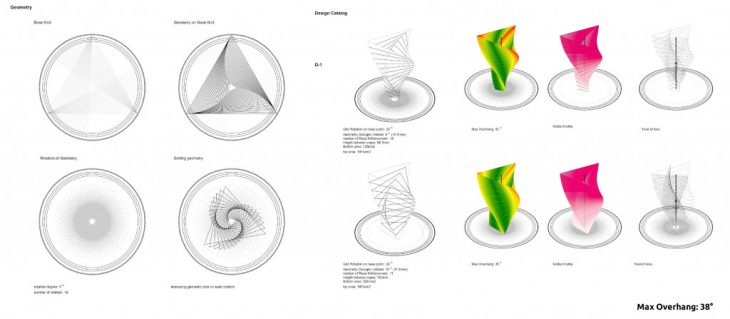
First test in 1:3 printing is single column. It has 38 degree overhang and twisted. Theoretically, without reinforcement, It will be collapsed. In structure analysis, it has maximum overhang on edges so if it were collapsed, it will have buckling on the edges.
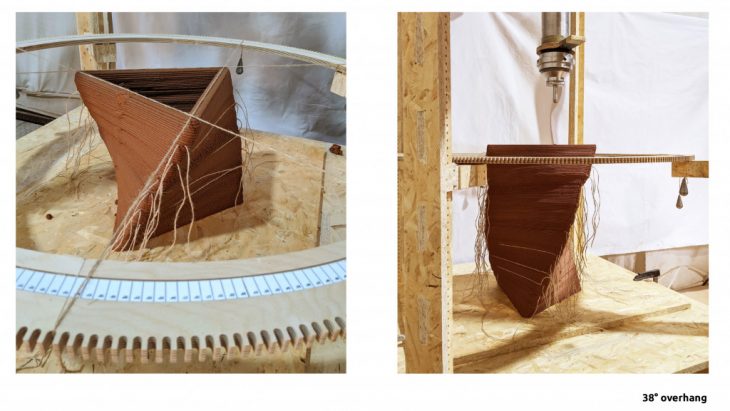
However, when it was printed, this geometry was quite stable and there was no buckling. So we tried more complex geometry in second printing test.
– Three column printing test
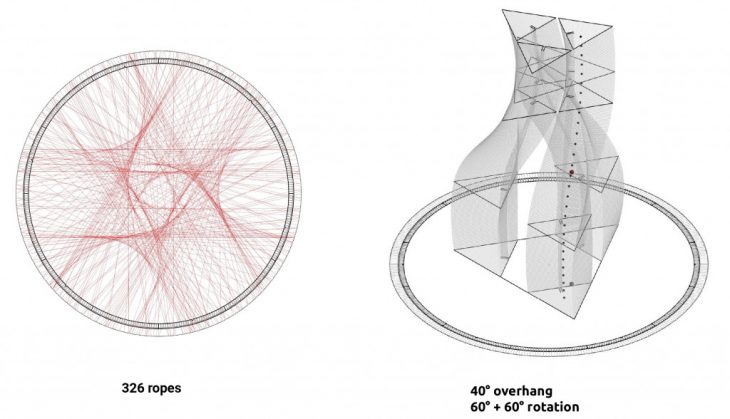
This geometry was produced based on 326 ropes grid. It has 40 degree overhang and 120 degree rotation. It is stated to be printed in 3 separate triangles and these are combined in 800 mm height with twisting.

Structure Analysis shows bending possibility on the edges and each triangle’s CG(center of gravity) point is located outside of base triangle. Global CG point are located in center opening so it is three column arch. Without reinforcement, it is not possible to be printed.
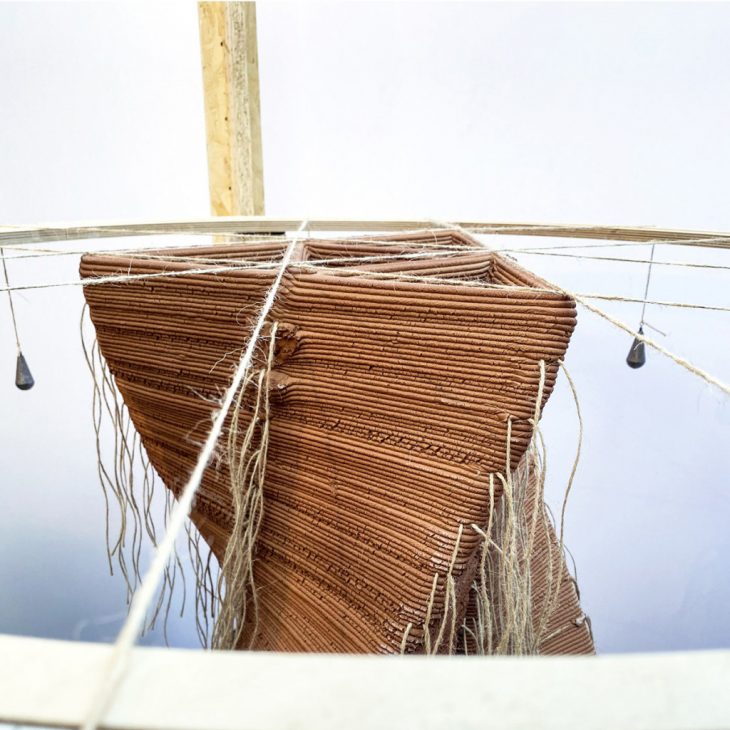
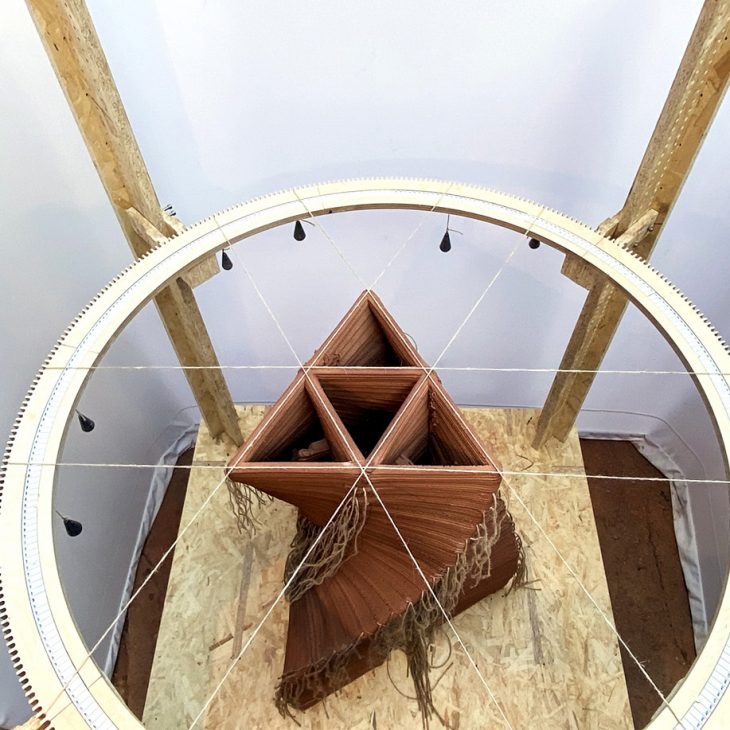
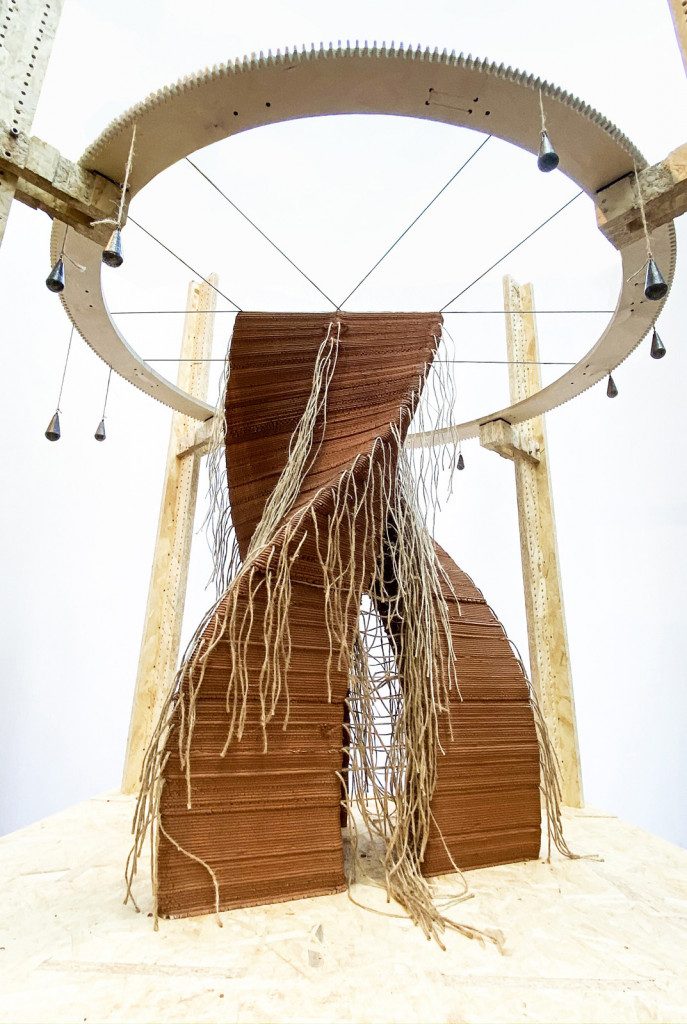
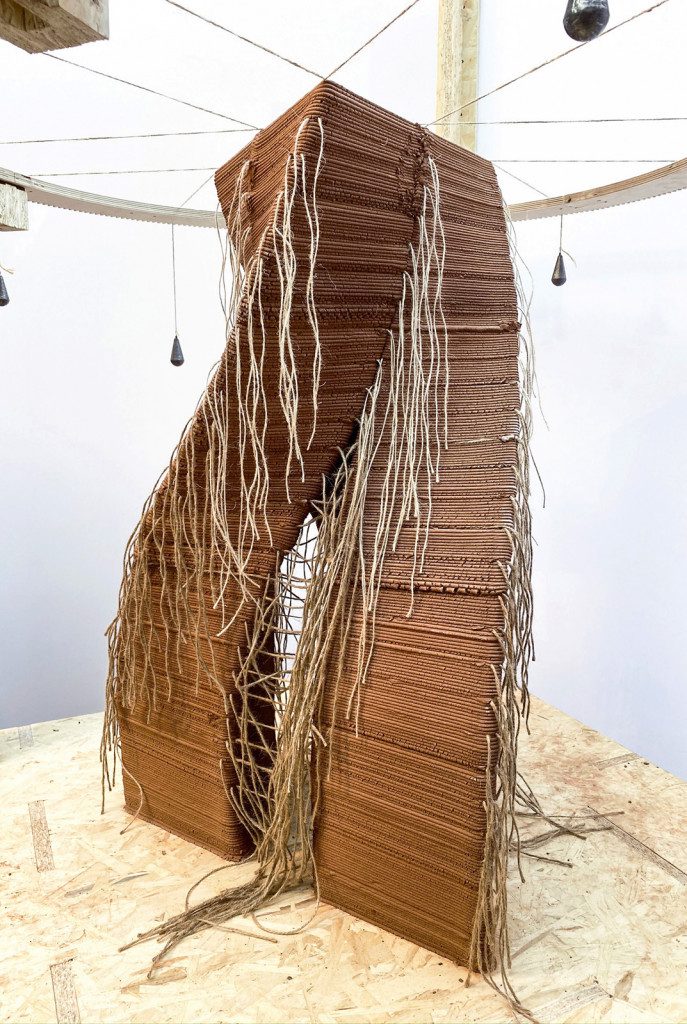
Conclusion ]
Printing was successful. This column reached 1.2 m without infills and was quite stable. We could find 3 conclusions in this testing
1_Rope was placed in every 10 layers. On 7-8th layer, buckling was found but after placing rope on 10th layer, buckling became 0. Usually, buckling starts from lower layer slightly but it becomes severe in higher layer. This rope reinforcement distributes buckling to small portion (In this test rope distributes bucking every 10 layers). So more risky geometry can be printed in stable condition.
2_Weak points in Digital structure analysis and real printing coincide. So in next step, we can abstract place of reinforcement by structure analysis and reducing rope number.
3_Ropes which connect three columns are also helpful to stabilize whole geometry. These rope keep tension during printing so each column holding the other columns. This will make more safe construction.
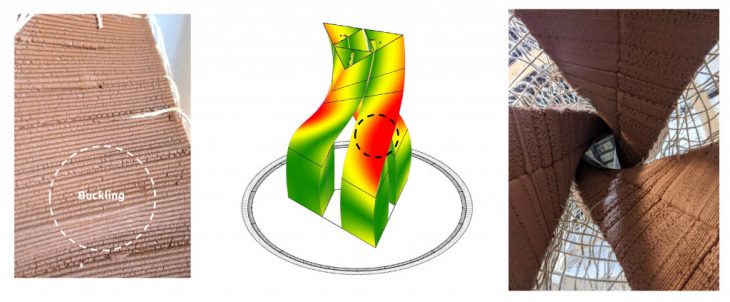
06_Future Steps
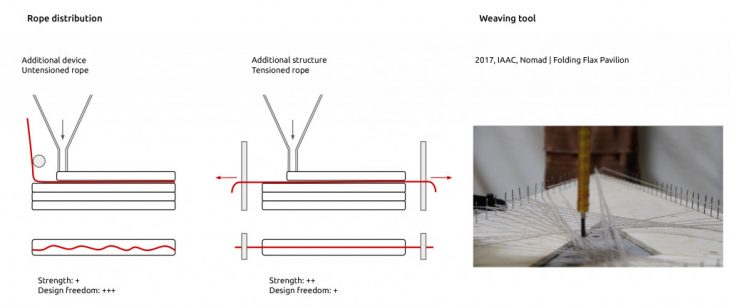
In this research, placing rope was done manually. However, this process can be automated by combining reinforcement and printing. If extruder has device for placing rope, rope can be placed with extruding layers . Another way is weaving rope by printer or robotics arms. This automated method will reduce manual labor and printing time.
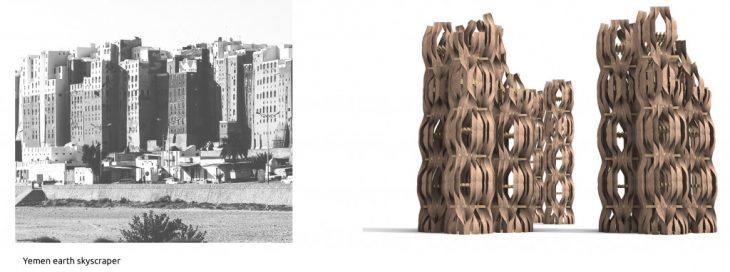
Fiber reinforcement in 3d printing will give us more possibility to build taller buildings by earth. However, It does not mean just higher structure. Yemen earth skyscraper is over 10th floor building but it needs massive volume. This reinforcement system will give us more design freedom and possibility to print with less materials.
IAAC OTF 2019 - 20 Students: Jae Shin, angelika.bocian, Faculty: Alexandre Dubor, Edouard Cabay, Kunaljit Singh Chadha Assistant: Ashkan Foroughi Dehnavi